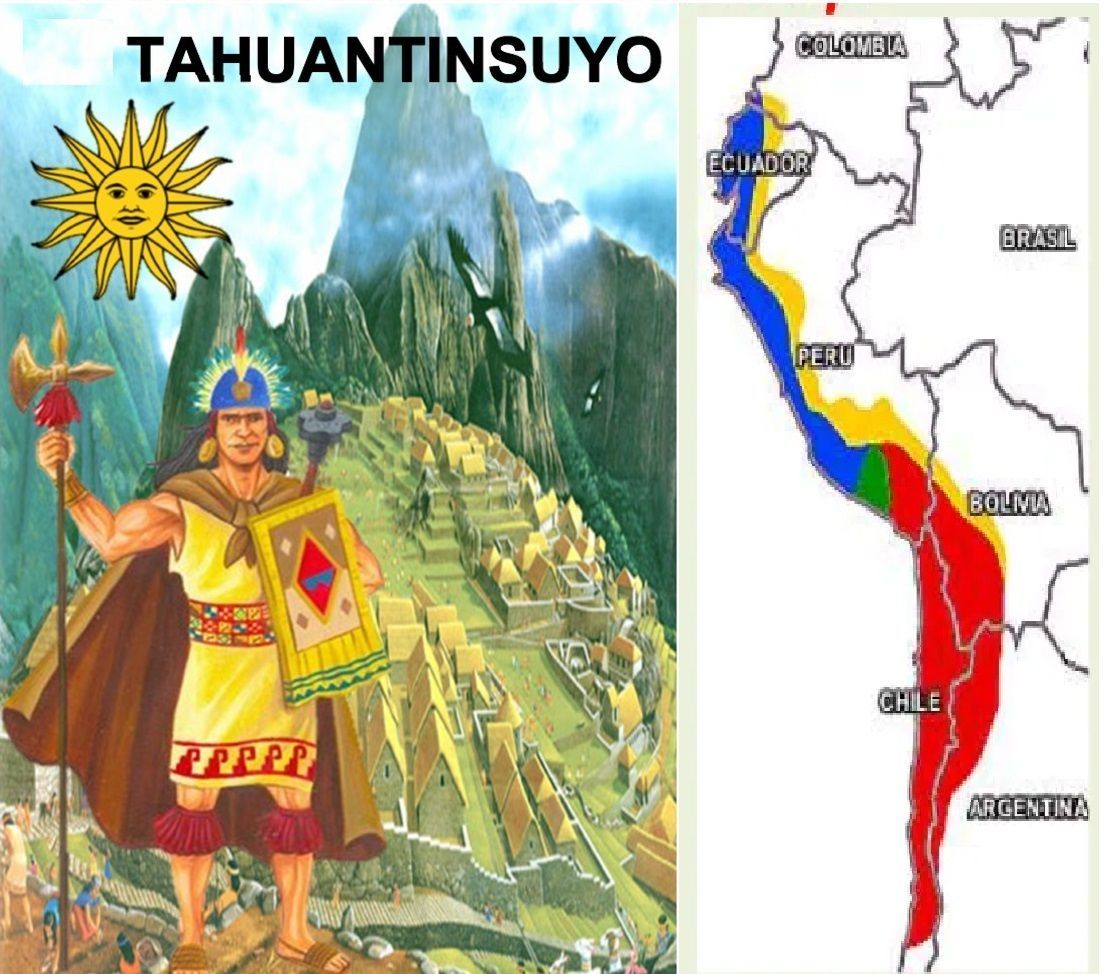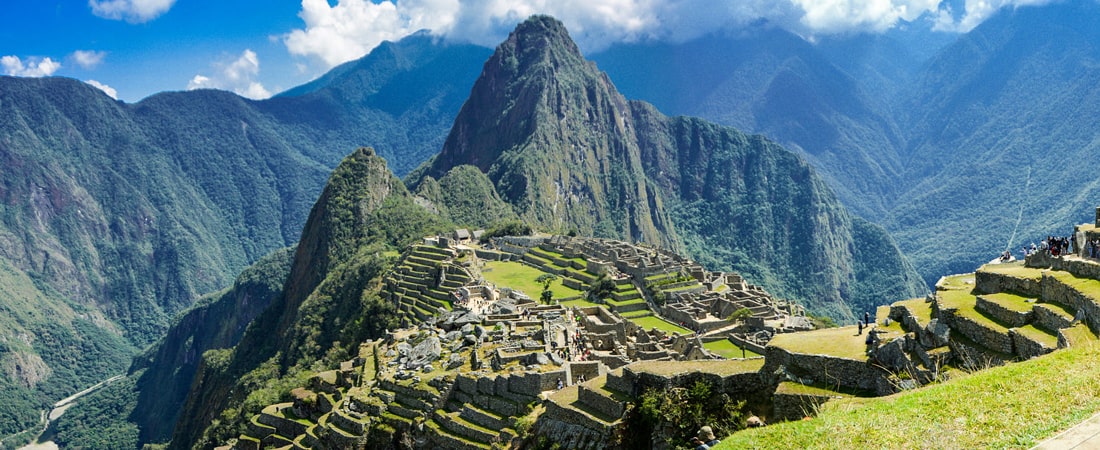The Inca Culture was a group of populations that settled on the South American continent with the most extensive dominance throughout the history of pre-Columbian America.
On the other hand, the territory in which this civilization was established is known as Tahuantinsuyo, while the period for which its dominion remained in force was called incan.
The Inca territory covered more than 2 million square kilometers distributed between the Pacific Ocean and the Amazon jungle, from the vicinity of Pasto in the north of the region to the Maule River in the south of the continent. The Incas were characterized by being conquerors, managing to seize the aforementioned territories.
Inca Culture location

machupicchu 
machupicchu
The Inca Civilization inhabited the region today occupied by Ecuador, Peru, northern Chile, western Bolivia and northwest Argentina. More than ten million citizens had merged into this high-level political and cultural function. They were fixed in the region of the Andes, the Incas constitute a great civilization that dominated a wide strip of lands throughout the South American territory.
History of Inca Empire
According to various remains found in archaeological excavations, the Inca Empire began approximately in the year 1200 AD. However, only a mixed domain was established in Cuzco, in fact, there are no data about the monarchs that were in force until the year 1438.
Between the years 1438-1471 is when the first Inca individual is revealed, to whom It was named as Pachacútec which had a great Empire according to the experts and the results thrown by the various excavations, in addition to dividing it administratively, to thereby make governance easier.
By 1471 Tupac Yupanqui, a monarch who made great contributions in the military field, was able to expand the Empire to the south and establish the border of the Empire on the Maule River.
In 1493, Huayna Cápac ascended to the throne, who was forced to face a series of insurrections by the subject peoples that were part of the Empire. Usually this type of revolt took place every time an Inca died, since the enemies considered that this was the moment of greatest weakness of the Inca Empire.
That is how it was necessary to confront the Chachapoyas, thus being able to annex the Gulf of Guayaquil, which made it possible to open the way until reaching the banks of the Ancasmayo River in Colombia where the border would be established.
Inca Language
The official Inca Language was Quechua in various varieties, although there were hundreds of local languages and dialects. Their cults were varied depending on their local forms, most of them related to places or sacred entities: “Huacas”, but the Inca leadership encouraged the cult of Inti, the sun god, and imposed their sovereignty over other cults like that of Pachamama.
Inca Empire
The Inca Empire was a great Indian empire that flourished from present-day Peru. This great domain was formed by several battles and by the conquest of indigenous peoples that inhabited the region. Its territory was very wide, with about 4000 kilometers according to the historian Marianne Mahn-Lot.
The Inca Empire, whose past political leader was Túpac Amaru, who died in 1572, was known as Tahuantinsuyu, that is, “the world of the four corners.” This name was linked above all to the fact that the empire was divided into four main parts. Cuzco (which means “navel of the world”) was in the center of these four regions and was considered the capital of the Inca civilization.
Incas religion
The religiosity of the Incas in Perú was marked by the worship to various Inca Gods of nature, such as the sun, the moon, the ray and the earth. In the value system of the Inca religion, all the benefits achieved should be rewarded with some kind of sacrifice that expressed the gratitude of men. Due to this fact, we observe that the Incas in Perú organized various rituals where sacrifices, even of humans, were common.
Inca Gods
Viracocha
The highest of the Inca Gods, the creator God, with characteristics of a cultural god, is Viracocha, qualified as the Old Man of the Heavens, Lord and Master of the world. For having created the earth, animals and human beings and being the possessor of all things, the Incas worshiped him without offering him sacrifices or tributes. He created men from stone. Then he scattered them in all four directions.
As a culture hero, he taught humans various techniques and crafts. He undertook a long journey until he reached Manta (Ecuador), from where he left across the Pacific Ocean. According to one version, in a boat made with his cape; another version says that he walked on water.
The God of the Sun
He was the protective divinity of the royal house. Its heat benefited the Andean land and made plants flourish. It was represented with a human face on a radiant disk. The great festival of the sun, the Inti Rami, is celebrated on the winter solstice. To welcome the sun, they offered a bonfire, where they burned a sacrificial victim, along with coca leaves and corn.
In celebration, they exclaimed: «Oh Creator, Sun and Thunder, always be young! Multiply the peoples! Let you live in peace! ». Inti’s wife was Mama-Kilya, mother Lua, in charge of regulating women’s menstrual cycles.
The god of rain
The god of rain, Apu Illapu, was an agricultural deity. At the time of the drought they made pilgrimages to the temples consecrated to Illapu, built in high regions. If the drought was very persistent, they offered him human sacrifices. The Incas in Perú believed that the shadow of Illapu was in the Milky Way, from where the water flowed that would fall on the earth in the form of rain.
Other important gods are Pachamama, mother earth, the world of visible things, mistress of the mountains, rocks and plains, and Pachacámac, the spirit that encourages the growth of all things, the father spirit of cereals, animals, birds and human beings.
Incas Economy
The Incas Economy was based on the ayllu, a kind of agrarian community. Corn was the base of agricultural production, followed by potatoes, tomatoes, squash, etc. Agriculture was extremely developed, with the construction of aqueducts, terrace plantations and irrigation canals.
The domestication of llamas, vicuñas and alpacas was of great importance for the Incas Economy, since these animals supplied wool, leather and were used as a means of transportation.
Social Organization of the Inca Culture
Regarding the social and political organization of Incas in Perú according to the Spanish testimony, they were perfect, possessors of community spirit.
The elite of Inca Civilization was made up of the royal family and the occupants of high political-administrative positions (priests, military chiefs, judges, provincial governors and wise men). Next, in a middle position, we have the merchants and artisans who guaranteed the circulation of goods that attested the presence of a rich material culture.
The peasants were organized through an extensive family group known as the ayllu. Each ayllu had agricultural work, military service, and its other works organized by an older leader called a curaca. Generally, each of these production units was equipped with a large warehouse that stored food and clothing used in any eventuality.










